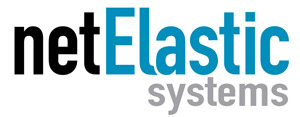In today’s world of rapidly increasing bandwidth demand, broadband service providers must continually increase capacity. As a result, having flexible and scalable network infrastructure has become critical. In this environment, broadband providers are turning to software-based virtual Broadband Network Gateways (vBNGs) to enhance network infrastructure.
Why are vBNGs gaining traction? Let’s discuss some of the advantages of virtual BNGs versus hardware-based BNGs.
Increased Scalability and Flexibility

A scalable network can handle current demand and expand to meet future demand without redesigning the network. In essence, scalability is scaling or expanding your network to accommodate future growth.
Unfortunately, hardware-based BNGs lack scalability. Once a BNG from a hardware manufacturer reaches its capacity, you need to purchase additional BNGs. And the purchasing and provisioning of hardware BNGs is time-consuming and expensive. It also means more hardware needs to be integrated into the network infrastructure. As a result, rapid scalability is nearly impossible with physical network devices.
Software companies offering vBNGs decouple BNG software from the hardware. With a virtual (software-based) BNG, service providers can turn on additional bandwidth capacity with a few simple commands. This results in dynamic scalability, where broadband providers can adjust capacity in real-time during spikes in usage.
Launching a new service on a hardware-based legacy network could take weeks or even months, a time frame that is not feasible in today’s fast-paced environment. In stark contrast, with a software-based BNG, the process is streamlined to a matter of minutes, allowing for fast and efficient changes.
Lower Costs
Traditional BNGs from router manufacturers bundle BNG software with their dedicated hardware, increasing capital and operating costs. The high upfront costs of hardware appliances are further exacerbated by their lack of scalability, as you are forced to purchase additional hardware-based BNGs when their capacity limit is reached. This financial burden can be significantly reduced with the adoption of vBNGs.
The ability of vBNG’s to scale capacity based on demand eliminates overprovisioning hardware to meet surges in network traffic. It also optimizes resource allocation, further reducing operational costs.
Every “for-profit” company is motivated by profit. However, pure software-based BNG vendors have no hardware margins to protect. Software-based BNGs run on standard, off-the-shelf x86 hardware, eliminating the hefty margins manufacturers receive on proprietary hardware. Maintenance costs are also lower with virtual BNGs since software updates can be made without making physical hardware changes.
BNG software running on commodity servers also benefits from the rapid price reductions in commercial x86-based hardware. For example, netElastic has found that their Virtual BNG saves service providers up to 70% in hardware costs since it runs on commodity x86 servers.
Easy to Manage
Deploying virtual BNGs simplifies network management as broadband providers can automate subscriber management tasks like provisioning and configuration changes through software-defined networking technologies. This automation saves time and reduces the need for manual interventions.
vBNG’s centralized management also allows broadband providers to manage network functions from one interface. This improves network visibility, makes troubleshooting easier, and helps ensure an excellent customer experience.
Moving to the Edge

According to a new research report from International Data Corporation (IDC), worldwide spending on edge computing is expected to reach $232 billion in 2024, an increase of 15.4% over 2023. Service provider spending on edge computing will be one of the fastest-growing of all 19 industries profiled by IDC.
Software-based BNGs can be located at the network edge (closer to subscribers) so service providers can maximize throughput and low-latency applications. This involves processing data in real time close to the data’s source.
Energy Efficiency
vBNGs also provide greater energy efficiency and lower energy costs. By virtualizing network functions, broadband providers can choose the hardware instead of being locked into vertically integrated network appliances. The benefits of having hardware choice include reduced power consumption, less cooling costs, and a smaller physical footprint. For example, netElastic vBNG running on Dell XR11 rack servers consumes less than 300 watts per hour. Broadband providers can use these operational cost savings to invest in their growth and improve sustainability.
Bringing it All Together
netElastic is a software company with deep roots in software-based networking. It was one of the first companies to offer a virtual BNG and has been a leader ever since. netElastic uses SDN technology to deliver market-leading scalability and flexibility. It has an optimized data plane and highly scalable design to support very small subscriber bases up to hundreds of thousands of subscribers.
Performance is important when choosing a vBNG, and netElastic and Intel have been working to maximize vBNG performance, reaching 1 Terabit of throughput in a 2RU server.
To learn more about the advantages of deploying a virtual BNG compared to a hardware-based BNG, please read the following customer case studies:
- Amplex Internet – United States
- Squirrel Internet – United Kingdom
- Softcom (WISP) – United States
- WebSprix – Ethiopia

